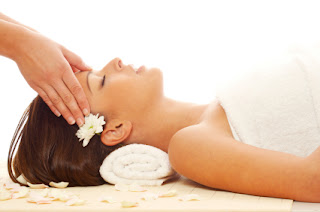What is Chemical Peel?
The use of chemical peels, termed chemoexfoliation, to rejuvenate skin is one of the most powerful tools available to facial plastic surgeons. The concept of using a chemical agent to resurface the skin for purposes of improved appearance dates as far back as ancient times. In fact, it has been reported that Cleopatra routinely bathed in sour goat's milk to help beautify her skin. Unbeknownst to her, the lactic acid contained in the milk was the active ingredient providing her with a rejuvenating peel.
The modern era of chemical peeling began at the turn of the century when George Miller MacKee, a dermatologist, began using phenol to treat facial scars.
Currently, a number of categories of chemical peeling agents available for rejuvenating the skin can be found. These range from superficial formulations available over-the-counter to deep chemical agents that should only be applied by a physician in a controlled setting. When used in the proper setting with appropriate technique, nearly all of these products have proven successful in improving quality and appearance of facial skin. The skin is composed of 2 mutually dependent layers, the epidermis and dermis, which rest on a fatty subcutaneous soft tissue.
Chemical peeling is the process of applying chemicals to the skin to destroy the outer damaged layers. The epidermis regenerates from the epidermal appendages located in the remaining dermis. This process begins within 24 hours of wounding and is usually complete in 5-10 days. The new epidermis shows greater organization and vertical polarity, with the disappearance of actinic keratoses and lentigines. Dermal regeneration is a slower process but is usually complete within several months. The overall result is soft supple skin that appears more youthful with fewer rhytides and dyschromias.
What are the indications?
Superficial peels are used to improve the appearance of pigment changes in the skin, acne scars, mild sun damage, or fine wrinkles in all skin types. They can be done on the face and on other parts of the body. A superficial peel may also be used to prepare the skin for a deeper peel.
Medium peels are used to treat mild to moderate wrinkles, long-term sun damage, pigment changes, and precancerous lesions of the skin (usually caused by sun exposure). Medium peels are used most often on the face.
Deep peels are used to treat severe wrinkles, long-term sun damage pronounced pigment changes, and lesions and growths on the skin. They are done only on the face. Deep peels are not done on darker skin types because they bleach the skin.
Who is the “right” candidate?
Anyone who has acne, photodamaged skin or want to have a rejunvenated face (including removing fine wrinkles) can do the peel. However, a proper medical history is advised e.g. past medical history like cardiac or liver problem or diabetic condition or herpes infection as this will affect the choice of chemical agent to be used. It is best to use some exofoliative agent e.g. tretinoin cream, to facilitate uniform penetration of the peeling agent and promote more rapid re-epithelialization. This pre-conditioning of the skin helps to improve overall result.
What is the classification of Chemical Peel?
The general classification can be as follows:
Superficial Peels - Superficial chemical peels are typically accomplished with use of alpha hydroxy acids (AHA). This group of chemicals is largely comprised of naturally occurring fruit acids, including glycolic, lactic, citric, tartaric, and malic acid. Other type is Jessner or Modified Jessner. This is a combination peel consisting of salicylic, lactic and resorcinol. As this category is superficial, number of sessions is required to see optimal result.
Medium Peels – Trichloroacetic acid (up to 35%) is used in this category. Trichloroacetic acid works as a keratocoagulant that produces a frost or whitening of the skin, which is dependent on the concentration used. Frosting of the skin can be seen very often and peeling of the skin after the procedure is common.
Deep Peels – Phenol peel is commonly regarded as one and this is usually combined with various formulations e.g. croton oil, liquid soap (Classic Baker Gordon formula).
What is the procedure?
The skin is cleansed and acetone is applied to ‘degrease’ the skin. Appropriate chemical or pumpkin treatment peel can be applied and left for a short period of time. The skin is then washed with cold water or neutralized to stop the chemical action.
How to take care afterwards?
Use a mild cleanser with liberal applications of moisturiser and sunscreens. Avoid exposure of sun. Instruct patients to refrain from trans-retinoic acid, sunscreen, or makeup until the face is healed to the satisfaction of the treating physician
What do you expect to see after the peel?
The skin may ‘sting’ a bit and peeling may occur after a few days later. Dryness, peeling and redness will subside after a few days later. Avoid the sun and if not possible, use sunscreen with at least SPF 30 and above. When the skin settles down in about a week, normal skin routine can continue. Review by the doctor is usually one month after the peel is done.
Why choose us?
In LS, we look at each individual face and will advise the appropriate combination of peels. However, we do not do deep peel as we find that complications outweigh benefits. There are other safer and better treatment alternatives to replace this.








 1:19 AM
1:19 AM
 Fighthits
Fighthits





